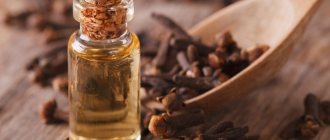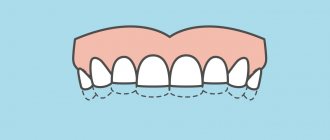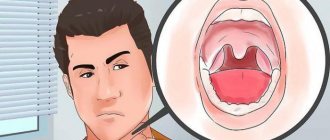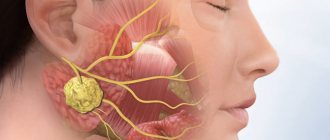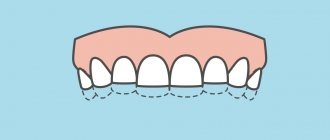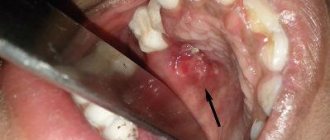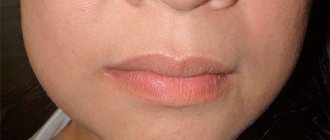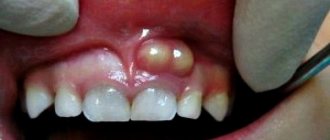Author, editor and medical expert – Petrashevich Anna Aleksandrovna.
Number of views: 137 197
Last updated date: 08/26/2021
Average reading time: 11 minutes
Up to 72% of the working-age population experience neck pain - cervicalgia - at least once a year, and in 1.7-11.5% this problem becomes a cause of disability1.
With age, the number of people experiencing discomfort in the neck area increases; women are more likely to experience this symptom2.
In most cases, cervicalgia is not associated with serious illnesses and, with proper treatment, ends in complete recovery. However, in 10% of cases, neck pain becomes chronic and requires long-term therapy2.
The information presented in this article is strictly for informational purposes only. Keep in mind that if you have a very sore neck, you should under no circumstances engage in self-diagnosis or self-medication. If signs of illness appear, you should consult a doctor.
Up to contents
Varieties
Unpleasant sensations can manifest as neck pain or shooting. Cervicago is an acute syndrome that prevents you from turning your head. Neck aching pain - cervicalgia. It happens:
- Superficial somatic. Occurs when the skin is damaged.
- Deep somatic. Appears when muscles and vertebrae are damaged.
- Visceral. Occurs as a sign of an infectious disease or pathology of internal organs.
If neck pain affects neighboring areas, either cervicobrachialgia (cervicobrachial syndrome) or cervicocranialgia (unpleasant sensations spread to the back of the head and then to the entire head) is diagnosed.
How to use the applicator, application zones
In 90% of cases it is necessary to act on the pain zone, and to increase efficiency on additional and auxiliary zones.
The general formulation should always include the core area (spine area).
The main zones are located on the back surface of the torso, head, and neck.
They are named the main ones due to the fact that the areas of skin on both sides of the spine and directly above the spine are closest to the exits of the roots of the cranial and spinal nerves and other structures.
Very important meridians also pass here, which influence all organs and systems of the body in the area in which they pass, control a person’s protective energy, and influence his resistance to diseases.
Thus, multi-needle multi-metal exposure is desirable and most effective on the area of the skin surface above the spine to the right and left of the spinal column and on the back surface of the torso, head and neck. You can apply it to the spine itself.
The choice of the most important area (zone, strip, segment) of the skin on the posterior surface of the body will depend on the main diagnosis, pathology, area of damage to certain organs, and the level of segmental innervation of these organs.
In the methodological recommendations for the use of Lyapko's application therapy, a schematic drawing is always given for each disease indicating the required areas of application.
Auxiliary zones are the anterior surface of the torso, head and neck. Due to the fact that the internal organs and endocrine glands are located directly under the anterior abdominal wall, under the chest, in the neck, face, exposure to them or to individual skin areas (metameres) in these areas using different metal needle applicators helps regulate, normalization, restoration, improvement and activation of the activities of these bodies. The result is achieved faster when using auxiliary zones simultaneously with the main and additional zones.
Accessory zones: zones of the skin of the lower and upper extremities, which are secondary (peripheral) in relation to the (central) structures of the spinal cord and brain. On the inner and outer surfaces of the arms and legs there are zones of “Yin” (female) and “Yang” (male) groups of channels - meridians of organs that have different groups of points that differ in purpose.
Using for applications and influencing various groups of points of certain meridian channels, we have the opportunity to further regulate (change, enhance or decrease) the activity of certain organs and systems (general action). Thus, we intensify the work when applying Lyapko applicators to the main and auxiliary zones and additionally provide a therapeutic effect.
Additional (zones of the skin of the lower and upper extremities) and auxiliary zones (the anterior surface of the torso, head and neck) should also be used in cases where, for a number of reasons, it is impossible to influence the main zone (plaster applied, wound surface). To enhance the therapeutic effect, it is advisable to include in the formulation an effect on symmetrical areas of the healthy side.
Thus, the result is achieved faster when using the main zones simultaneously with additional and auxiliary zones, or if this is not possible, then alternately.
Areas of application for neck pain (Fig. 1): main 2, 3; auxiliary 1, 4, 12, 13; additional 20, 22, 28, 31.
Fig.1
The following applicators are recommended. Flat applicators: “Romashka M”, “Chance”, “Needle massage pillow”, “Kvadro”, “Narodny”, “Sputnik plus”, “Insoles plus”, “Speckled”.
Application belts: “Baby”, “Universal M”, “Magic ribbon “Health”. Considering the flexibility and elasticity, small pitch of needles 4.3 of the Magic Tape “Health”, it is very comfortable to use on the neck area.
Application rollers: “Face roller M”, “Universal roller M”, “Big roller M”, “Needle ball”.
In the morning and afternoon, roll the cervical-collar area of the back, head, front surface of the body, and also influence the auxiliary areas on the arms and legs; the sensations should be pleasant. They can also be used to warm up the body before a massage.
In addition to the cervical-collar zone, to enhance the effect, it is recommended to simultaneously or alternately use applicators on additional zones on the anterior surface of the body and auxiliary zones on the limbs.
It is better to complete the session by treating the feet using the Insole Plus applicator, which can also be used on all parts of the body.
The exposure time for flat applicators, belts, tapes is 20-30 minutes; Roll with rollers or a “needle ball” for 10-15 minutes.
The course of treatment is 10–14 days, which can be repeated after a break after 1–2 weeks. Such procedures can be used in courses for a long time.
For neck pain, you can use either a manual back massage or a massage using the Pharaoh massager, which can be used through thin fabric or over the body lubricated with oil or cream. The duration of the massage and its intensity determines the desired effect. Long lasting, up to 15 minutes. and more, massage promotes complete relaxation of muscles and creates a sedative (calming) effect. A short massage, 3–5–7 minutes, has a tonic (stimulating) effect. During the session, you should perform circular movements clockwise or longitudinal movements up and down.
After the massage, we recommend laying on a flat applicator for rest and relaxation.
The “Speck” applicator can be fixed on the pain area. Considering the small area of influence, wearing is long - 1 - 3 hours.
Causes
Most often, discomfort occurs due to muscle spasms or muscle strain. They happen for the following reasons:
- hypothermia;
- sudden turn of the head;
- staying in the same position for a long time;
- muscle overstrain during work.
The discomfort caused by these factors does not require complex treatment. As a rule, they go away on their own within 1-3 weeks.
If there is severe discomfort, numbness, the patient suffers from dizziness, impaired mobility, the causes of the illness may be much more serious. It is imperative to consult a specialist.
Acute pain syndrome is observed when:
- problems with the spinal column: bruises, soft tissue injuries;
- inflammatory and infectious diseases;
- radiculitis;
- herniated intervertebral discs;
- curvature of the spine in the cervical region;
- osteochondrosis, arthrosis;
- neurological diseases;
- fibromyalgia;
- oncology.
Depending on the disease and its degree, the pain syndrome may vary. Pathology can be suspected based on a number of accompanying signs.
First aid
It is impossible to undergo complex treatment at home. However, there are several ways to reduce pain before consulting a doctor:
- over-the-counter painkillers - Analgin is available in any pharmacy and in your home medicine cabinet;
- massage of the neck and head area - effective for muscle spasms, it can be performed independently;
- warm bath – relaxes muscles, improves blood circulation and relieves spasms.
If the tissues around the painful area are swollen, redness of the skin and an increase in its local temperature are observed - massage and thermal procedures are contraindicated. In this case, it is enough to take a painkiller and make an appointment with a doctor.
Pain in the front of the neck
Unpleasant sensations under the chin or along the entire front of the neck may indicate a number of pathologies. The list is impressive:
- inflammation of the lymph nodes;
- angina pectoris;
- cysts and abscesses;
- inflammation of muscles, ligaments and nerves;
- pathology of the thyroid gland.
It is impossible to independently determine which disease this symptom has. The cause of pain can also be pinching of blood vessels or nerves by an intervertebral disc that has become deformed.
Our Innovative Medical Center has developed a set of programs aimed at eliminating diseases without surgery or pills. The team consists of experienced doctors: neurologists, osteopaths, chiropractors, kinesiotherapists, massage therapists.
Back neck pain
Changes in the spine are the main cause of aching, sharp or nagging pain in the neck area. They occur due to low physical activity and constant work at the computer. Discomfort can be a symptom of the following diseases:
- osteochondrosis - changes in the structure of intervertebral discs;
- protrusion of intervertebral discs (their protrusion);
- intervertebral hernia;
- spondylosis - bone growths on the vertebrae;
- muscle spasms;
- vertebral fractures as a result of whiplash injuries or osteoporosis.
Pain in the back of the neck is a non-standard symptom of spinal tuberculosis, osteomyelitis, and Reiter's syndrome.
Prevention of neck pain and musculoskeletal disorders in general
Anyone who has ever encountered the problem under consideration has repeatedly asked the question: “What methods of struggle exist?” First of all, it is worth noting that the best treatment at all times is considered to be prevention, which consists of creating optimally comfortable conditions for the functionality and nutrition of the human spinal column.
It is important to create such conditions, the observance of which will not just be continuous, but literally for life. This is precisely the secret of the success of preventive measures.
There are several components to preventing neck pain. Let's look at each of them.
Physical activity and sports
A key component in preventing destructive processes in the musculoskeletal system. Moderate exercise helps maintain optimal health.
Workplace safety
The ergonomics of working conditions largely determines the state of human health, because people spend quite a lot of time at the workplace.
If it is impossible to organize comfortable conditions, then you must at least strive to systematically relieve tension by systematically performing simple warm-up exercises.
Special diet
The lack of useful vitamins and minerals negatively affects the condition of the skeleton of the human body. In order for the tissues to have everything they need, it is important to ensure rational nutrition.
The daily diet should be moderately enriched with sources of not just energy, but also vitamins and microelements.
Don't forget about your drinking regime. To ensure the required level of metabolism, you need to drink 1.5 to 2 liters of clean water per day.
Taking chondroprotectors
The use of preventive courses of taking chondroprotectors helps maintain the optimal condition of articular tissues, and also allows you to accelerate regenerative processes when they are damaged.
Preference should be given exclusively to reliable drugs that have proven themselves in the modern pharmacological market.
One of the most effective is considered to be “Artracam”. Do you want to enjoy a full life? It's time to start preventing ODA diseases today. By adhering to the principles of maintaining your own health, you can forget about feeling unwell and enjoy all the benefits
Pain syndrome in the lateral surfaces of the neck
Discomfort in these areas manifests itself as a burning, throbbing pain, sometimes accompanied by tingling. Unpleasant sensations spread to the shoulder or ear on the right or left. Sometimes they are accompanied by the appearance of secondary torticollis due to the constant tilt of the head to the affected side.
This symptom is inherent in the following pathologies:
- problems with blood vessels, atherosclerosis;
- muscle spasm due to a sharp turn of the head, hypothermia or physical exertion;
- malignant tumors localized in the larynx, thyroid gland, pharynx.
At the initial stage of rheumatoid arthritis, pain can spread to the cervical region, back of the head, and head. When turning the head or bending the neck, it intensifies.
Symptoms
If unpleasant sensations rarely bother you, they may be the result of an uncomfortable sleeping position or awkward head movement. No special treatment is required. To eliminate discomfort, do exercises, light rubbing, take warm baths, it is recommended to use an orthopedic mattress and pillows. But there are situations when you urgently need a consultation with a neurologist or chiropractor.
Warning signs include:
- stiffness of movements;
- the duration of painful sensations is more than 1-2 days;
- the appearance of concomitant pain in the shoulder, arm;
- frequent headaches, especially in the back of the head, which are accompanied by dizziness;
- numbness of fingers, hands.
If you have suffered a neck, head or spine injury and are constantly experiencing pain in these areas, we invite you to contact our Innovative Medical Center for help.
How to relieve neck pain with osteochondrosis
For acute pain, you need to take a non-steroidal anti-inflammatory drug or use a gel or cream with an anti-inflammatory effect. You need to rub the product wherever you feel pain and numbness. If the pain intensifies when you turn your head, you should limit your movements. Do not make sudden head movements. If you have shoulder pain, do not put any weight on your arm. It is possible to use painkillers with a warming effect.
All these recommendations will help relieve pain for 1-2 days. But to prevent repeated attacks, a complete cure for osteochondrosis is necessary. Our clinic specializes in the treatment of diseases of the spine; we employ real masters of their craft. We offer both the most modern and long-proven treatment methods: Hiwamat and UVT therapy, kinesitherapy, therapeutic massage, acupuncture, osteopathy, manual therapy, taping.
Application therapy Lyapko
Lyapko applicators in various modifications (plates, rollers, application belts, application tapes) are an original, powerful device with many health-improving therapeutic capabilities.
Their action is based on the principles of traditional Chinese medicine - superficial multi-needle acupuncture, as well as on the general physiological mechanisms of life.
Mechanisms of action of the applicator.
The high healing effect of Lyapko applicators is due to a combination of intense reactions:
- reflex-mechanical;
- galvano-electric;
- immunological.
Application therapy has a pronounced analgesic and antispasmodic effect. Improves blood circulation, lymph flow, microcirculation, reduces tissue swelling. Activates tissue mechanisms of immune defense, increases the level of its own opiate peptides and anti-stress hormones in the blood, reduces the level of sensitivity of pain receptors, has a positive psycho-emotional effect and, as a result, stimulates general human adaptation mechanisms. In contact with the skin, the applicator needles stimulate the release of a person’s internal medicines, engaging his “inner doctor” in the work.
It is important to note that local (local) improvement of blood circulation during application therapy occurs without additional stress on the heart, since the work of peripheral circulation increases and the heart rests at this time. This is very important for all categories of patients and, especially, with coronary heart disease, circulatory failure of 1-2 degrees, and elderly people.
For neck pain, many patients experience positive dynamics from Lyapko application therapy. It is combined with all types of medication and physiotherapeutic treatment. The ease of use of Lyapko application devices and their safety make it possible to carry out such procedures at home.
After removing the applicator at the site of its application, all pores are open for 10 minutes, so to improve the healing effect, you can apply ointments and creams that have an analgesic and anti-inflammatory effect.
Diagnostics
A neurologist is primarily involved in the treatment of neck pain. At the reception, the specialist listens to the patient’s complaints and conducts an examination. It determines the cause of the problem. Most often it becomes a deviation from the norm in the condition of the spine. These changes are the cause of the development of concomitant diseases of internal organs.
Each segment of the spinal cord is responsible for the functioning of a specific organ. When the vertebrae change position or the height of the intervertebral discs decreases, the transmission of nerve impulses from the spinal cord to the internal organs is disrupted.
If the problem is in the cervical region, the ENT organs, vocal cords, thyroid and parathyroid glands, neck muscles or forearms are affected. Those. Problems with the spine and diseases of internal organs are more often diagnosed. Therefore, for aching neck pain, examination by a chiropractor is recommended. If other diseases are detected, additional examination by specialized specialists: cardiologist, endocrinologist, otolaryngologist.
In our Innovative Medical Center, a patient complaining of discomfort in the cervical spine undergoes a comprehensive diagnosis. The list of procedures includes:
- blood test: general and biochemical;
- blood test for thyroid hormone levels;
- computed tomography of the cervical spine;
- magnetic resonance imaging of the neck area;
- Ultrasound examination of the vessels of the neck, salivary glands, thyroid gland with Doppler ultrasound.
Using MRI, a specialist examines in detail the condition of the intervertebral discs. The method allows you to diagnose diseases in the early stages. The doctor will assess the condition of the blood flow. If there is compression of the spinal cord and its roots, he will see them in the image.
Contact us
Call now
8 (495) 803-27-45
Make an appointment through our service
Make an appointment
Diagnostic methods
If you experience neck pain, you should consult a therapist. After the examination, he will refer you for consultation to a doctor of a more narrow specialization. Thus, diseases of the cervical spine are treated by a vertebrologist, diseases of the nerves by a neurologist, damage to bones and soft tissues by a traumatologist. To determine the cause of pain and make an accurate diagnosis, additional examination methods will be required:
- radiography - the pictures will show fractures and dislocations of the vertebrae, signs of osteochondrosis, spondylosis, pathological growth of bone tissue;
- MRI – prescribed for suspected protrusions and hernias, as well as diseases of muscles, ligaments and tendons;
- blood tests to determine symptoms of infectious diseases and inflammatory processes;
- additional tests that will allow you to diagnose rheumatoid arthritis - determination of C-reactive protein, rheumatoid factor.
The Clinical Brain Institute has precise, modern equipment, thanks to which you can quickly obtain the necessary data. Correct diagnosis is the key to successful treatment. Complete information about the condition of the cervical spine will indicate which techniques and medications should be used for each patient.
Treatment of cervical pathology
After diagnosis, the doctor develops an individual treatment strategy for each patient. It takes into account the severity of changes in the affected area, concomitant diseases, age and level of physical development. A set of measures is being carried out aimed at eliminating the symptoms and causes of the pathology.
Physiotherapy
The Innovative Medical Center conducts sessions using modern Hivamat 200 Evident devices and equipment for shock wave therapy. With the help of these procedures, swelling and inflammation are relieved, and blood flow in the damaged area is improved. After a course of UVT therapy, the elasticity of ligaments and tendons is restored, and metabolism is accelerated.
Taping
This method of manual therapy relieves pain and restores damaged muscles. Special thermally coated bandages are used. They are carefully fixed on the damaged part of the body.
Manual therapy
For pathologies of the cervical spine, it is performed using several techniques. The session begins with a relaxing massage with increasing tempo of kneading. The effect is felt after 1 procedure. After the course, the vertebrae return to their anatomically correct position, and muscle spasms are eliminated. Blood circulation improves, soft tissues are restored.
Acupuncture
The procedure is indicated for various diseases of the musculoskeletal system. The effect on biologically active points of the body allows you to eliminate neck pain and weakness, and increase blood supply in this area.
Massotherapy
An auxiliary method of therapy is effective for osteochondrosis and other diseases of the spine. After the procedures, discomfort, swelling, cramps, and fatigue are eliminated. Improves blood flow, the patient’s well-being and emotional state. Either local or general massage is prescribed. Techniques are selected individually for each specific case.
Kinesitherapy
Exercise therapy and classes on special decompression simulators are prescribed to strengthen the muscle corset. During the procedures, the load is removed from the spine and the risk of cartilage abrasion is minimized. A large hall with additional equipment is equipped for classes - rollers, balls. Doctors and experienced instructors supervise the exercises.
Treatment
Help before diagnosis
The appearance of pain in the anterolateral cervical region is a sign of various diseases, therefore, to identify the immediate cause, consultation with a specialist is required. Before the diagnosis is verified, for severe pain in the front of the neck, it is allowed to take analgesics from the NSAID group to eliminate discomfort. Without a doctor's prescription, it is not advisable to use warm compresses or other local treatments on the cervical area, as this may aggravate the symptoms. It is important to limit movements in the cervical spine as much as possible.
Conservative therapy
Drug treatment is primarily aimed at eliminating the underlying disease as the cause of pain; symptomatic therapy is also required to relieve pain. For chronic pain, physiotherapy methods are indicated - electrophoresis with anti-inflammatory drugs and local anesthetics, laser therapy and UHF. In the acute period, physiotherapeutic treatment is undesirable. It is necessary to ensure maximum functional rest for the neck and head. The following groups of pharmaceutical drugs are most often prescribed:
- Analgesics
. Anti-inflammatory drugs (NSAIDs) are widely used, which have a pronounced analgesic effect. They reduce the amount of pathological cytokines that irritate nerve endings and eliminate local signs of inflammation. - Antibiotics
. For purulent lesions, massive etiotropic therapy is needed to eradicate the pathogen. For common processes in the cervical tissue, a combination of two drugs is indicated. For tuberculosis, specific treatment regimens are selected. - Corticosteroids
. If the causes of pain in the neck are rheumatic diseases, long-term use of hormones is necessary. To quickly relieve exacerbations, pulse therapy with prednisolone is recommended. If ineffective, cytostatics may be added. - Antithyroid drugs
. For thyrotoxicosis of various etiologies, medications that selectively inhibit thyroid function are indicated. If a decrease in the endocrine function of an organ is determined, thyroid hormone replacement therapy is used. - Antianginal agents
. To prevent angina attacks, drugs that improve blood supply to the myocardium and antiplatelet agents are effective. The best therapeutic effect is provided by beta-adrenergic receptor blockers, calcium antagonists, and myotropic antispasmodics. - General strengthening therapy
. For lesions of peripheral nerves, B vitamins (especially thiamine) are prescribed, which improve the nutrition of nerve fibers and the speed of impulse conduction. Additionally, agents with an anabolic effect are recommended.
Surgery
For unbearable pain in the neck, local anesthesia is performed in the form of novocaine blockades. When an abscess forms in the retropharyngeal space or in the case of suppuration of a median neck cyst, prompt opening of the abscess and provision of adequate drainage is necessary. After dissecting the abscess capsule, be sure to wash the cavity with solutions of antibiotics and antiseptics. When sialoadenitis is complicated by strictures of the excretory duct, its bougienage is required, followed by the introduction of proteolytic enzymes.
In case of proliferation of nodular goiter of the thyroid gland, which is accompanied by pain and compression syndrome, surgical interventions of various volumes are indicated. If the function of the rest of the organ is preserved, enucleation of the node is performed; in case of diffuse pathology, hemithyroidectomy or subtotal resection of the thyroid gland is performed. In case of severe neck injuries with damage to internal organs, revision, removal of bone fragments and elimination of defects of hollow organs are performed.
